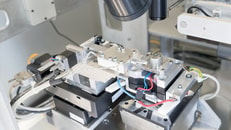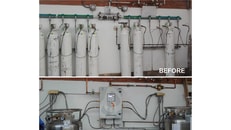An introduction to…Self-contained breathing apparatus
There is no doubt that respiratory patients benefit from oxygen therapy or that it improves their quality of life. However, for some patients, starting oxygen therapy can be a very worrying time with a few even seeing it as a last resort or ‘the end’. But the provision of these services is constantly evolving, with new products or devices available all the time.
There are two major different ways that home oxygen can be prescribed:
- Long term oxygen therapy (LTOT) – usually a minimum of 16 hours per day
- Ambulatory oxygen for use when patients are out and about
The majority of patients on LTOT are prescribed stationary oxygen concentrators, which sit in a room in the house with tubing stretching along the skirting boards. Patients are also prescribed back-up cylinders. Some patients have liquid oxygen which they top up from a dewar to a smaller canister and is breathed in as a gas. Ambulatory oxygen may be prescribed if oxygen levels drop when patients are active. Patients are tested for this when they go for an oxygen assessment. Portable ambulatory oxygen comes in the form of smaller cylinders and as with all devices that are currently available, unfortunately, these devices do have their challenges and limitations:
... to continue reading you must be subscribed























